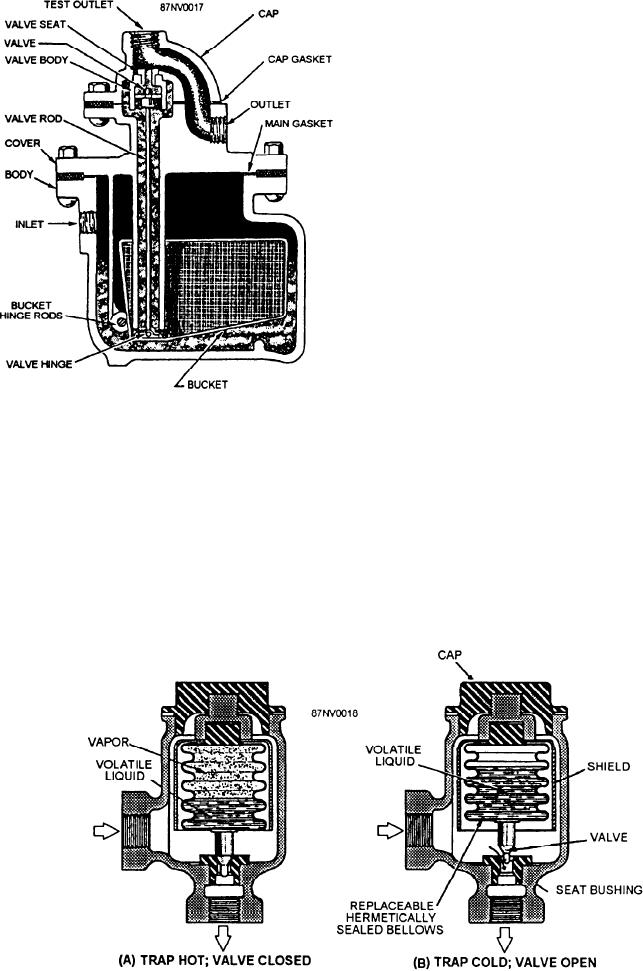of these traps is regulated by the condensate level in the
trap body. The bucket, being buoyant, floats as
condensate enters the trap body. The valve is connected
to the bucket and therefore closes as the bucket rises.
As condensate continues to flow into the trap body, the
valve will remain closed until the bucket is filled. When
the bucket is filled, it sinks and causes the valve to open.
The valve will remain open until enough condensate is
blown out to allow the bucket to float, thus closing the
valve.
The thermostatic-type steam trap shown in figure
15-18 is often called a bellows-type steam trap. This
type of steam trap has fewer moving parts, and is more
compact than the mechanical steam traps just described.
The bellows-type trap is used only for pressures up to
100 psi. Its operation is controlled by the expansion of
vapor from a volatile liquid that is enclosed in a
bellows-type element. Steam enters the trap body and
heats the volatile liquid in the sealed bellows, which
causes the expansion of the bellows. The valve is
attached to the bellows, and therefore closes when the
bellows expands. The valve remains closed and traps
Figure 15-17.--Bucket-type steam trap.
then cools the bellows and causes it to contract; the
three types of steam traps most commonly used are (1)
valve then opens and allows the condensate to drain.
mechanical, (2) thermostatic, and (3) flash, or impulse.
Figure 15-19 shows three types of lavatory traps.
You will be concerned primarily with the mechanical
In views A and B, the P-type lavatory trap is shown with
and the thermostatic types.
and without a cleanout plug. View C shows the S-type
Mechanical steam traps may be of the ball float type
trap specified for shipboard use. This latter type,
or of the bucket type, which is suitable only for
equipped with cleanout plug, is supplied only in 1
low-pressure use. The bucket-type steam trap (fig.
l/2-inch IPS. However, S-type traps without cleanout
15-17) is suitable for pressures up to 150 psi. Operation
plugs are available in 1 l/4-inch, 1 l/2-inch, and 2-inch
Figure 15-18.--Thermostatic steam trap.
15-16






